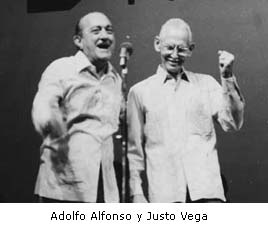6.7 Guajiro or Cuban Point today.

Cuban Punto, a genre based on the music sung in Spain during the 15th and 16th centuries, has a clear Hispanic heritage. It achieved its national identity in the mid-18th century and has been cultivated in our country ever since. It has enjoyed tremendous development over the centuries. Today, it is considered one of the most important musical genres in Cuban music.
Currently, recreational and competitive festivals are organized, such as those held in Majagua (Ciego de Ávila province), where young Punto cultivators gather. In the province of Las Tunas, the well-known Jornadas Cucalambeanas (Cucalambean Festivals) are held, attended by instrumentalists from all over the island. There are also Décima Workshops, organized by the Amateur Directorate, where amateurs gather to learn improvisation and the rules of literary precepts.
Cuban Punto has been broadcast in Cuba on both radio and television, appearing for over thirty years on programs such as Palmas y Cañas, where lutenist Miguel Ojeda organized a group to accompany the decimists.
Among the poets who have distinguished themselves in the cultivation of Cuban Punto, we can mention Celina González and Chanito Isidrón. Although there are many excellent improvisers in Cuba, the musical “encontronazos” of poets Justo Vega and Adolfo Alfonso are still fondly remembered. Alfonso, notoriously playful, more than once drove Vega crazy, the latter recognized as the greatest exponent of this genre. Guajiro or Cuban Punto is probably the most popular rural rhythm, precisely because the rivalry between factions sometimes hides grudges and even messages of secret love.








